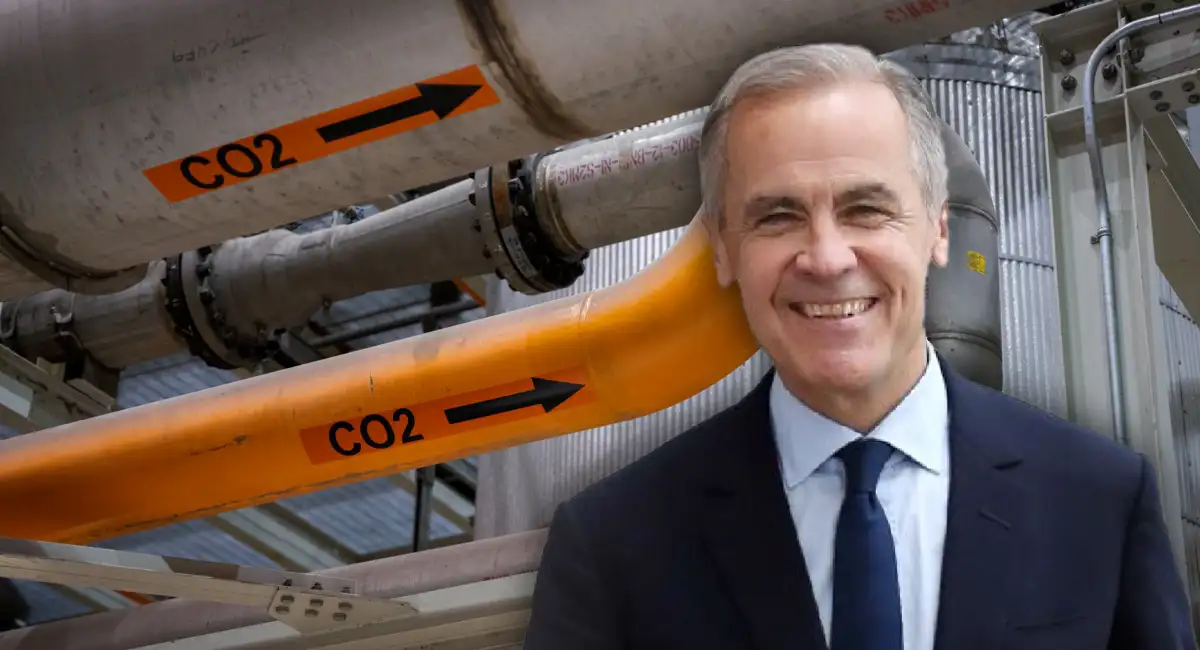
Rewiring Canada: Mark Carney’s Big Build and the Urgent Economic Reset
Canada’s economy is in urgent need of repair. After nearly a decade of ideological policymaking, bloated bureaucracy, and fiscal drift under the Trudeau government, the country faces mounting debt, stagnant productivity, and a reputation that has driven away foreign investment. Prime Minister Mark Carney now has a rare opportunity to reverse course and restore Canada’s economic vitality.
This moment echoes 1993, when Jean Chrétien inherited a similarly troubled economy. With Finance Minister Paul Martin, Chrétien launched a bold fiscal reset: they slashed federal spending, reformed transfer payments, and prioritized deficit reduction. By the late 1990s, Canada was running surpluses, attracting investment, and regaining global credibility. Carney must now do the same—on a larger scale.
Carney’s Big Build agenda will demand sweeping reforms across multiple fronts. Central to this effort is dismantling entrenched bureaucratic resistance and eliminating red tape that has stifled national progress. To succeed, Carney will need to fundamentally reorient a decade-long governing philosophy that has often stood in the way of meaningful economic development and strategic investment.
Word in Ottawa from senior mandarins and policy insiders is that Carney is deeply focused on serious structural changes that will realign Canada’s economic trajectory for generations. His approach is methodical, strategic, and rooted in long-term competitiveness, not short-term political optics.
Carney’s success will hinge on his ability to tackle ten foundational issues that are serious roadblocks to Canada’s economic progress.
1. Make Canada Open for Business Again
Foreign direct investment (FDI) has stagnated, dropping from $65 billion in 2017 to just over $40 billion in 2023, according to the OECD. The C.D. Howe Institute, Fraser Institute, and Conference Board of Canada have all warned that excessive regulation, politicized approvals, and unpredictable policy shifts have made Canada unattractive to investors.
Carney’s government must streamline regulatory approvals, depoliticize infrastructure and energy decisions, reinforce property rights, and eliminate internal trade barriers. Canada must send a clear message: we are open for business—and serious about competing for global capital.
2. Simplify and Reform the Tax Code
The Fraser Institute reports that the average Canadian family pays 43 percent of its income in taxes—more than on housing, food, and clothing combined. The C.D. Howe Institute recommends shifting the tax burden away from income and investment, and toward consumption, while eliminating distortionary tax expenditures.
Carney must lower marginal tax rates, eliminate boutique credits, reform capital gains taxation, and avoid new taxes on business and investment. Smarter taxation—not higher taxation—is the path to growth.
3. Cut the Bureaucratic Fat
Since 2015, the Trudeau government added over 110,000 new federal employees, increasing the public service by 43 percent to 367,772 people. In 2015, the federal public service cost taxpayers approximately $44 billion. By 2025, that figure is projected to exceed $70 billion annually.
Carney must cap headcount, audit departmental mandates, digitize service delivery, and rein in consultant spending. Lean government is not austerity—it’s efficiency.
4. Restore Fiscal Discipline
Canada’s debt-to-GDP ratio has surged past 42 percent, and deficits continue to mount. The Parliamentary Budget Officer warns that Canada’s fiscal path is unsustainable without major reforms.
Carney must commit to balanced budgets, introduce spending caps tied to GDP growth, reform federal transfers, and publish transparent debt reduction targets. Fiscal discipline is the foundation of long-term prosperity.
5. Unleash Canada’s Resource Economy
Canada is rich in oil, gas, uranium, and critical minerals. Yet Trudeau’s government treated the resource sector like an adversary, especially Alberta. Pipeline projects were delayed or cancelled, and regulatory hurdles weaponized against development.
The most egregious example: when German Chancellor Olaf Scholz visited Canada in 2022 seeking $60 billion in LNG exports, Trudeau refused, citing “no business case.” Germany turned to the U.S. and Australia, costing Canada billions and damaging our reputation.
Carney, an Albertan, must fast-track LNG and pipeline approvals, reform the Impact Assessment Act (Bill C-69), and treat Alberta as a partner. Canada’s resource economy is a strategic advantage—not a liability.
6. Accelerate Infrastructure and Project Approvals
Major projects in Canada face years—sometimes decades—of regulatory delays. The average time to build a mine is 18 years. Transit projects like Toronto’s Eglinton Crosstown LRT and Vancouver’s Broadway Subway are billions over budget and years behind schedule.
Carney must set statutory timelines, create a national permitting dashboard, empower provinces and municipalities, and reform procurement rules. Canada must build faster, smarter, and cheaper.
7. Fix Interprovincial Trade Barriers
Canada’s internal trade barriers cost the economy tens of billions annually. Carney’s government has already passed the One Canadian Economy Act (Bill C-5), removing federal exceptions under the Canadian Free Trade Agreement.
Now, he must pressure provinces to follow suit, expand mutual recognition agreements, enable seamless labor mobility, and create a national digital marketplace. A truly unified Canadian market would boost competitiveness and innovation.
8. Rebuild Canada’s Reputation Abroad
Canada’s international credibility has eroded. From trade disputes to defense spending shortfalls, our allies question our reliability. Colin Robertson—a former diplomat, senior fellow at the Canadian Global Affairs Institute, and one of Canada’s most respected voices on foreign policy—argues that economic strength is essential to diplomatic influence. Robertson has long maintained that Canada’s global standing depends on its ability to deliver on defense, trade, and strategic partnerships.
Carney must now deliver after reaffirming Canada’s commitment to NATO and NORAD. He must negotiate strategic trade agreements, promote Canadian energy and technology abroad, and restore Canada’s reputation as a serious economic player.
He is also navigating a volatile trade environment with U.S. President Donald Trump, whose tariff threats have destabilized North American trade. So far Carney has adopted a “nimble” strategy, recognizing Trump’s shifting objectives—from budget balancing to strategic competition with China.
In Hamilton last week, Carney unveiled a steel protection package that includes a 50 percent surtax on non-U.S. steel imports exceeding 2024 levels, a 25 percent surcharge on steel melted and poured in China, and $1 billion in innovation funding for domestic producers. His approach is to defend Canadian industry, diversify trade relationships, and secure long-term stability—even if some tariffs remain.
9. Support Innovation and Small Business
Canada’s innovation ecosystem is underperforming. Carney must expand access to capital for startups, enhance R&D tax credits, remove barriers to scaling, and create innovation hubs tied to universities and industry. A vibrant small business sector is key to job creation and economic dynamism.
10. Reform Immigration to Align with Economic Needs
Canada’s immigration system is overwhelmed. The Trudeau government abandoned the points-based system in favour of mass intake, admitting over 2.9 million newcomers between 2021 and 2024. In 2023 alone, nearly one million international students entered Canada, many of whom arrived without adequate housing or support. The result: a housing crisis, strained healthcare, and growing public backlash.
Canada now faces an immigration backlog of over 802,000 applications. The federal government has reduced permanent resident targets from 500,000 to 395,000 and capped student permits. But the damage is done. According to the Conference Board of Canada, misaligned immigration inflows have contributed to inflationary pressures and infrastructure strain.
Carney must restore integrity to the system by:
• Prioritizing skilled economic migrants
• Streamlining credential recognition
• Aligning immigration levels with housing and infrastructure capacity
• Restructuring temporary resident programs to prevent abuse
Immigration should be a driver of prosperity, not a strain on services and social cohesion.
Legislation That Must Be Rescinded or Reformed
To truly unlock Canada’s economic potential, Carney must rescind or overhaul key legislation that has stifled growth:
• Bill C-69 (Impact Assessment Act) – Politicized and obstructive to resource development
• Bill C-48 (Oil Tanker Moratorium Act) – Blocks energy exports from Northern BC
• Carbon Pricing Framework – Must be restructured to avoid penalizing industry and consumers
• Excessive regulatory layering – Must be consolidated under a streamlined permitting regime
Canada’s economic recovery won’t happen by accident. Make no mistake—the Trudeau government presided over a decade of fiscal recklessness, regulatory overreach, and foreign policy missteps that weakened Canada’s economic foundations and eroded its global credibility. Many of the same Liberal architects now surround Mark Carney, which makes the challenge even sharper: to reject the complacency and ideological drift that defined the last decade.
Carney’s path to success depends on clear priorities, bold leadership, and the courage to break from the failed policies of the past. As Jean Chrétien’s government proved in the 1990s, decisive action and disciplined governance can restore prosperity.
The question now is whether Mark Carney has the resolve—and the political will—to do it again, not just to repair what’s broken, but to reshape Canada’s future for a generation.
Header image: Prime Minister Mark Carney pictured with the Pathways Alliance proposed carbon capture and storage project that would transport CO₂ from the oilsands, helping six member companies reduce their emissions and reach net-zero by 2050. (Photo: Pathway Alliance)








